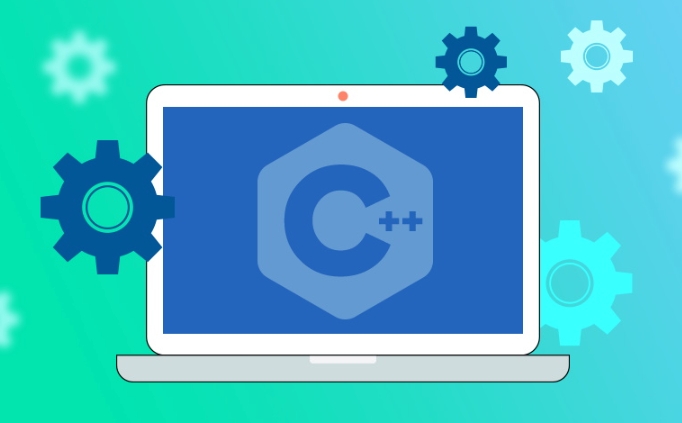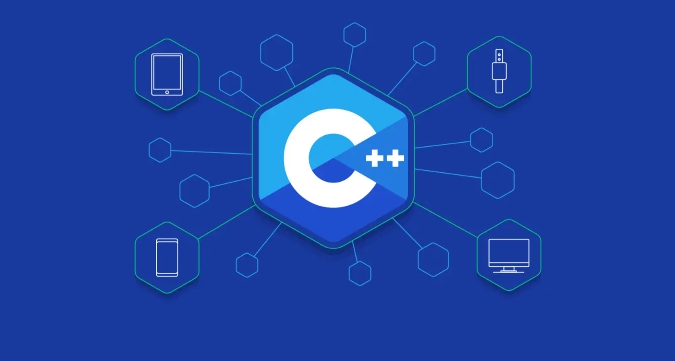How to use std::thread in C for multithreading programming? 1. Instantiate the std::thread object when creating a thread and pass it into a function or lambda expression, such as std::thread t(threadFunction); 2. Join() or detach() must be called to manage the thread life cycle to avoid unexpected program termination; 3. When passing parameters, directly attach parameters to the constructor. Reference passes must be used to ensure the original variables are modified; 4. To manage multiple threads, you can use std::vector container to store and loop join(); 5. To avoid accessing destroyed local variables and directly copying thread objects, you should use mobile semantics to process thread objects.

Using std::thread in C for multithreading is pretty straightforward once you understand the basics. The key idea is that each std::thread object represents a separate thread of execution, and you can launch functions to run concurrently by passing them into the thread constructor.

Here's how to get started and avoid common pitfalls.

Creating a Thread
To create a new thread, you simply instantiate a std::thread object and pass it a function (or a lambda) to execute. That function will then run in parallel with the main thread (or whatever thread created it).
For example:

#include <iostream>
#include <thread>
void threadFunction() {
std::cout << "Hello from thread!\n";
}
int main() {
std::thread t(threadFunction);
t.join(); // Wait for the thread to finish
return 0;
}A few important notes:
- You must either call
join()ordetach()on astd::threadbefore it goes out of scope — otherwise your program will terminate unexpectedly. -
join()blocks the calling thread until the thread finishes execution. -
detach()lets the thread run independently (you lose control over when it ends).
Passing Arguments to Threads
You can pass arguments to the thread function just like regular function calls. Just provide them after the function name in the constructor.
void printNumber(int x) {
std::cout << "Value from thread: " << x << "\n";
}
std::thread t(printNumber, 42);
t.join(); If you're passing objects by reference, use std::ref() to make sure the thread gets a reference instead of a copy:
void increment(int& x) {
x;
}
int value = 5;
std::thread t(increment, std::ref(value));
t.join();
// Now 'value' is 6Otherwise, changes inside the thread won't affect the original variable.
Managing Multiple Threads
In many cases, you'll want to launch multiple threads and wait for all of them to finish. To do this cleanly, store your threads in a container like a std::vector<std::thread> .
#include <vector>
void worker(int id) {
std::cout << "Worker " << id << " running\n";
}
int main() {
std::vector<std::thread> threads;
for (int i = 0; i < 5; i) {
threads.emplace_back(worker, i);
}
for (auto& t : threads) {
t.join();
}
return 0;
}This pattern is very useful in practice, especially when you want to process data in parallel, such as splitting up a big loop across several threads.
Avoiding Common Mistakes
One easy mistake is letting a thread access local variables that have gone out of scope. For example:
void badFunc(const std::string& s) {
std::cout << s << "\n";
}
void createThread() {
std::string msg = "Thread message";
std::thread t(badFunc, msg);
t.detach(); // No join!
// msg may be destroyed before the thread runs
} Since we detached the thread, there's no guaranteee msg still exists when the thread uses it. This leads to undefined behavior.
Another thing to remember: threads are not copyable, only movable. So if you're working with containers or returning threads from functions, always use move semantics.
std::thread t1([]{ std::cout << "Hi\n"; });
std::thread t2 = std::move(t1); // OK
// std::thread t2 = t1; // Error! Threads can't be copied So basically, using std::thread boils down to launching functions in separate threads, managing their lifecycle with join() or detach() , and being careful about data sharing and lifetimes. It's simple enough for basic concurrency but powerful enough to build more complex systems on top of.
The above is the detailed content of How to use std::thread for multithreading in C ?. For more information, please follow other related articles on the PHP Chinese website!

Hot AI Tools

Undress AI Tool
Undress images for free

Undresser.AI Undress
AI-powered app for creating realistic nude photos

AI Clothes Remover
Online AI tool for removing clothes from photos.

Clothoff.io
AI clothes remover

Video Face Swap
Swap faces in any video effortlessly with our completely free AI face swap tool!

Hot Article

Hot Tools

Notepad++7.3.1
Easy-to-use and free code editor

SublimeText3 Chinese version
Chinese version, very easy to use

Zend Studio 13.0.1
Powerful PHP integrated development environment

Dreamweaver CS6
Visual web development tools

SublimeText3 Mac version
God-level code editing software (SublimeText3)
 Using std::chrono in C
Jul 15, 2025 am 01:30 AM
Using std::chrono in C
Jul 15, 2025 am 01:30 AM
std::chrono is used in C to process time, including obtaining the current time, measuring execution time, operation time point and duration, and formatting analysis time. 1. Use std::chrono::system_clock::now() to obtain the current time, which can be converted into a readable string, but the system clock may not be monotonous; 2. Use std::chrono::steady_clock to measure the execution time to ensure monotony, and convert it into milliseconds, seconds and other units through duration_cast; 3. Time point (time_point) and duration (duration) can be interoperable, but attention should be paid to unit compatibility and clock epoch (epoch)
 How to get a stack trace in C ?
Jul 07, 2025 am 01:41 AM
How to get a stack trace in C ?
Jul 07, 2025 am 01:41 AM
There are mainly the following methods to obtain stack traces in C: 1. Use backtrace and backtrace_symbols functions on Linux platform. By including obtaining the call stack and printing symbol information, the -rdynamic parameter needs to be added when compiling; 2. Use CaptureStackBackTrace function on Windows platform, and you need to link DbgHelp.lib and rely on PDB file to parse the function name; 3. Use third-party libraries such as GoogleBreakpad or Boost.Stacktrace to cross-platform and simplify stack capture operations; 4. In exception handling, combine the above methods to automatically output stack information in catch blocks
 What is a POD (Plain Old Data) type in C ?
Jul 12, 2025 am 02:15 AM
What is a POD (Plain Old Data) type in C ?
Jul 12, 2025 am 02:15 AM
In C, the POD (PlainOldData) type refers to a type with a simple structure and compatible with C language data processing. It needs to meet two conditions: it has ordinary copy semantics, which can be copied by memcpy; it has a standard layout and the memory structure is predictable. Specific requirements include: all non-static members are public, no user-defined constructors or destructors, no virtual functions or base classes, and all non-static members themselves are PODs. For example structPoint{intx;inty;} is POD. Its uses include binary I/O, C interoperability, performance optimization, etc. You can check whether the type is POD through std::is_pod, but it is recommended to use std::is_trivia after C 11.
 How to call Python from C ?
Jul 08, 2025 am 12:40 AM
How to call Python from C ?
Jul 08, 2025 am 12:40 AM
To call Python code in C, you must first initialize the interpreter, and then you can achieve interaction by executing strings, files, or calling specific functions. 1. Initialize the interpreter with Py_Initialize() and close it with Py_Finalize(); 2. Execute string code or PyRun_SimpleFile with PyRun_SimpleFile; 3. Import modules through PyImport_ImportModule, get the function through PyObject_GetAttrString, construct parameters of Py_BuildValue, call the function and process return
 How to pass a function as a parameter in C ?
Jul 12, 2025 am 01:34 AM
How to pass a function as a parameter in C ?
Jul 12, 2025 am 01:34 AM
In C, there are three main ways to pass functions as parameters: using function pointers, std::function and Lambda expressions, and template generics. 1. Function pointers are the most basic method, suitable for simple scenarios or C interface compatible, but poor readability; 2. Std::function combined with Lambda expressions is a recommended method in modern C, supporting a variety of callable objects and being type-safe; 3. Template generic methods are the most flexible, suitable for library code or general logic, but may increase the compilation time and code volume. Lambdas that capture the context must be passed through std::function or template and cannot be converted directly into function pointers.
 What is a null pointer in C ?
Jul 09, 2025 am 02:38 AM
What is a null pointer in C ?
Jul 09, 2025 am 02:38 AM
AnullpointerinC isaspecialvalueindicatingthatapointerdoesnotpointtoanyvalidmemorylocation,anditisusedtosafelymanageandcheckpointersbeforedereferencing.1.BeforeC 11,0orNULLwasused,butnownullptrispreferredforclarityandtypesafety.2.Usingnullpointershe
 How does std::move work in C ?
Jul 07, 2025 am 01:27 AM
How does std::move work in C ?
Jul 07, 2025 am 01:27 AM
std::move does not actually move anything, it just converts the object to an rvalue reference, telling the compiler that the object can be used for a move operation. For example, when string assignment, if the class supports moving semantics, the target object can take over the source object resource without copying. Should be used in scenarios where resources need to be transferred and performance-sensitive, such as returning local objects, inserting containers, or exchanging ownership. However, it should not be abused, because it will degenerate into a copy without a moving structure, and the original object status is not specified after the movement. Appropriate use when passing or returning an object can avoid unnecessary copies, but if the function returns a local variable, RVO optimization may already occur, adding std::move may affect the optimization. Prone to errors include misuse on objects that still need to be used, unnecessary movements, and non-movable types
 What is an abstract class in C ?
Jul 11, 2025 am 12:29 AM
What is an abstract class in C ?
Jul 11, 2025 am 12:29 AM
The key to an abstract class is that it contains at least one pure virtual function. When a pure virtual function is declared in the class (such as virtualvoiddoSomething()=0;), the class becomes an abstract class and cannot directly instantiate the object, but polymorphism can be realized through pointers or references; if the derived class does not implement all pure virtual functions, it will also remain an abstract class. Abstract classes are often used to define interfaces or shared behaviors, such as designing Shape classes in drawing applications and implementing the draw() method by derived classes such as Circle and Rectangle. Scenarios using abstract classes include: designing base classes that should not be instantiated directly, forcing multiple related classes to follow a unified interface, providing default behavior, and requiring subclasses to supplement details. In addition, C






